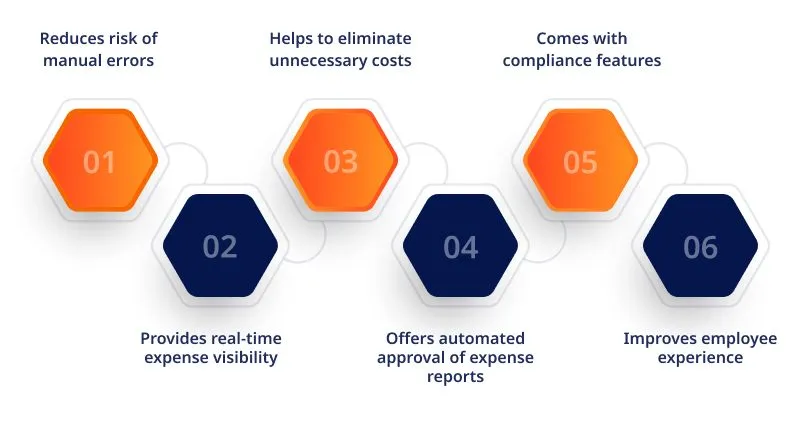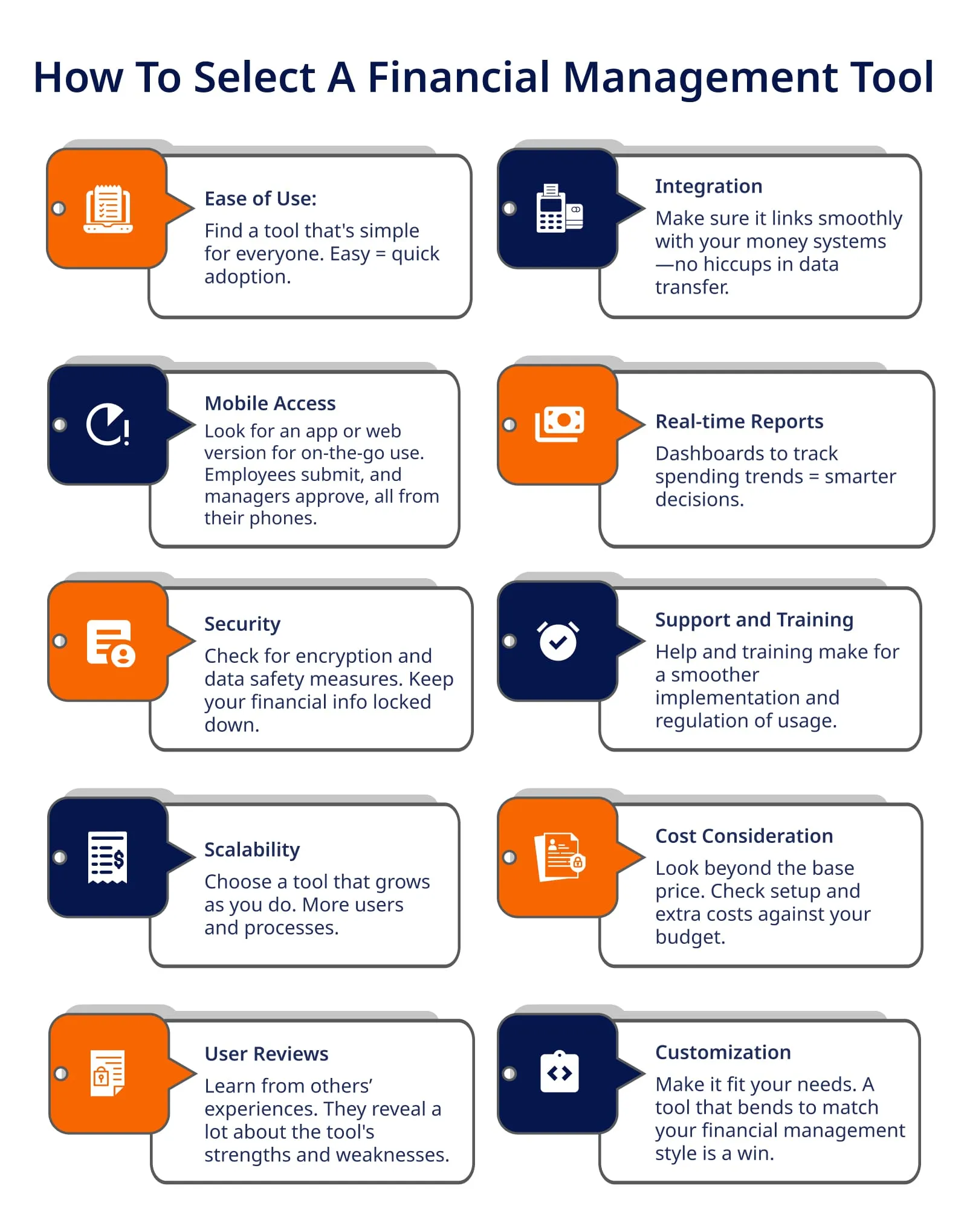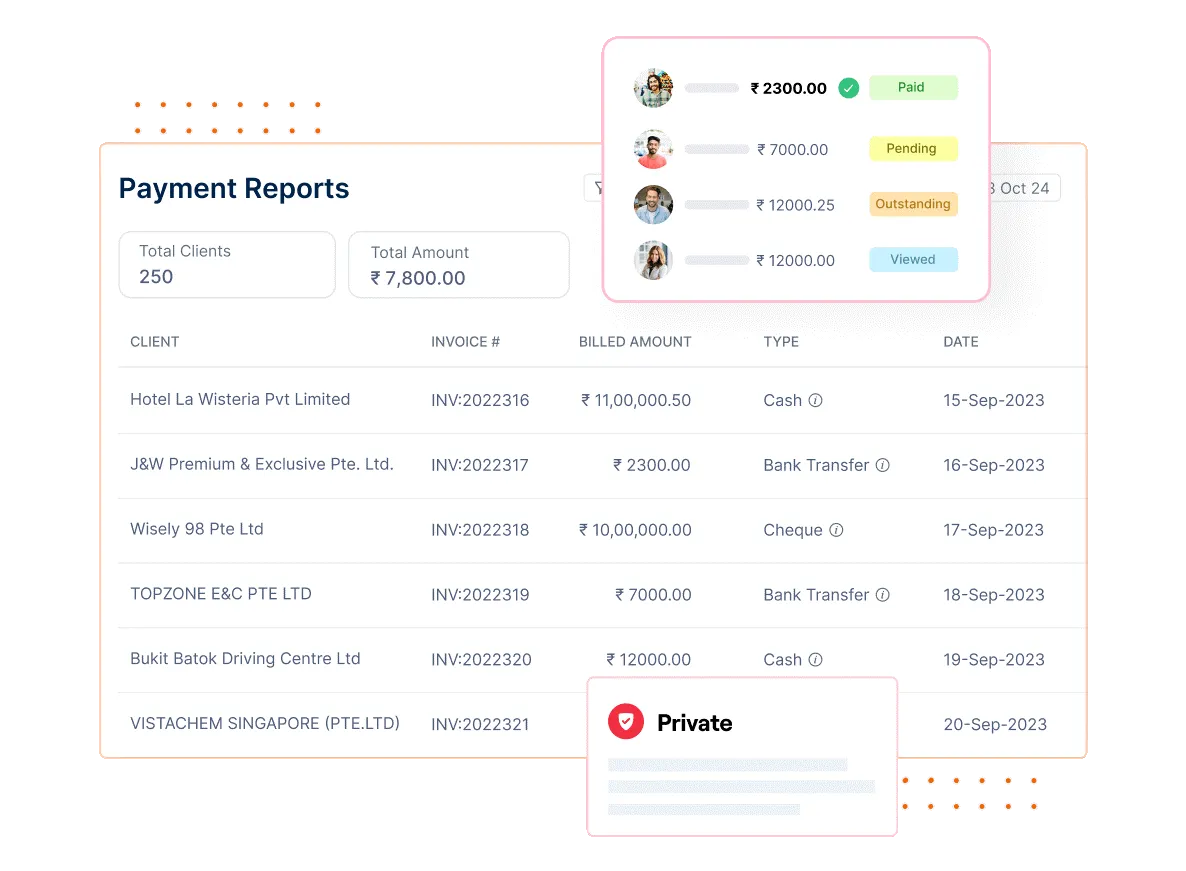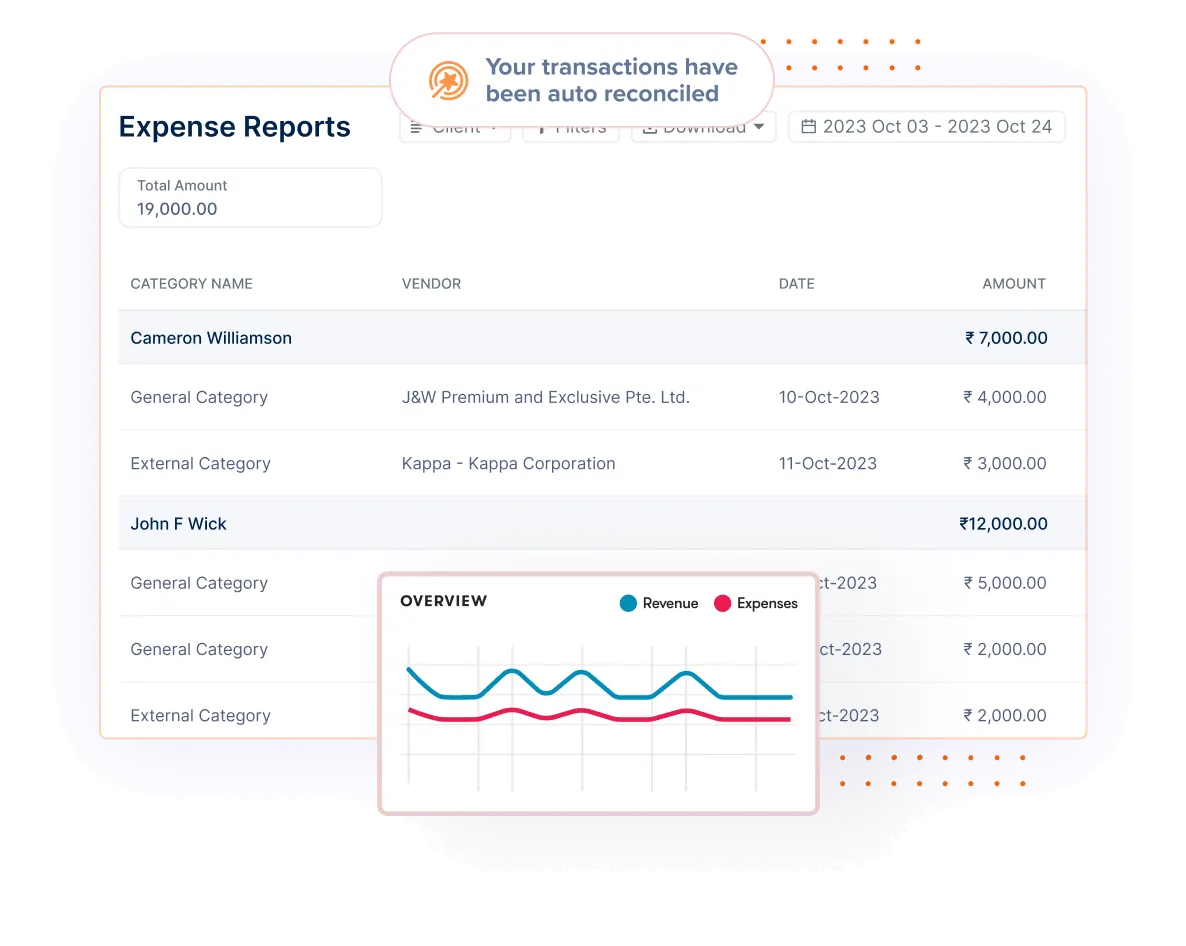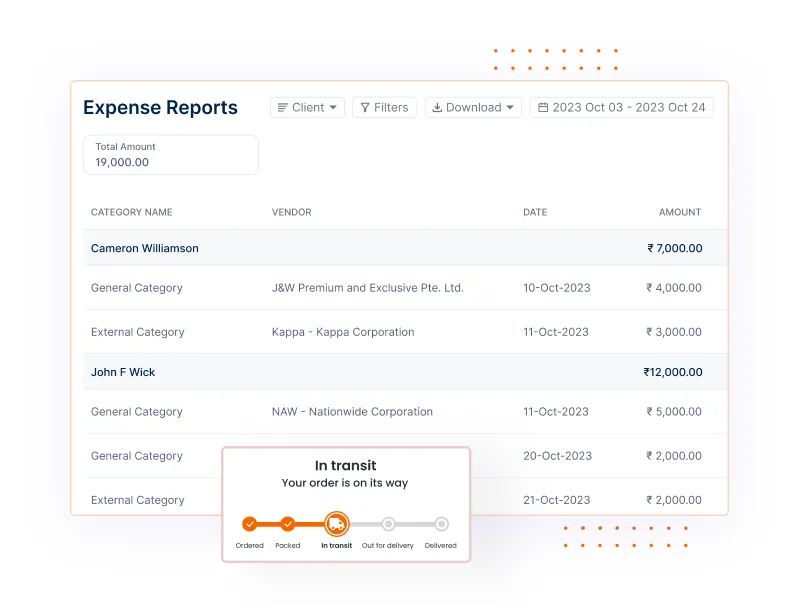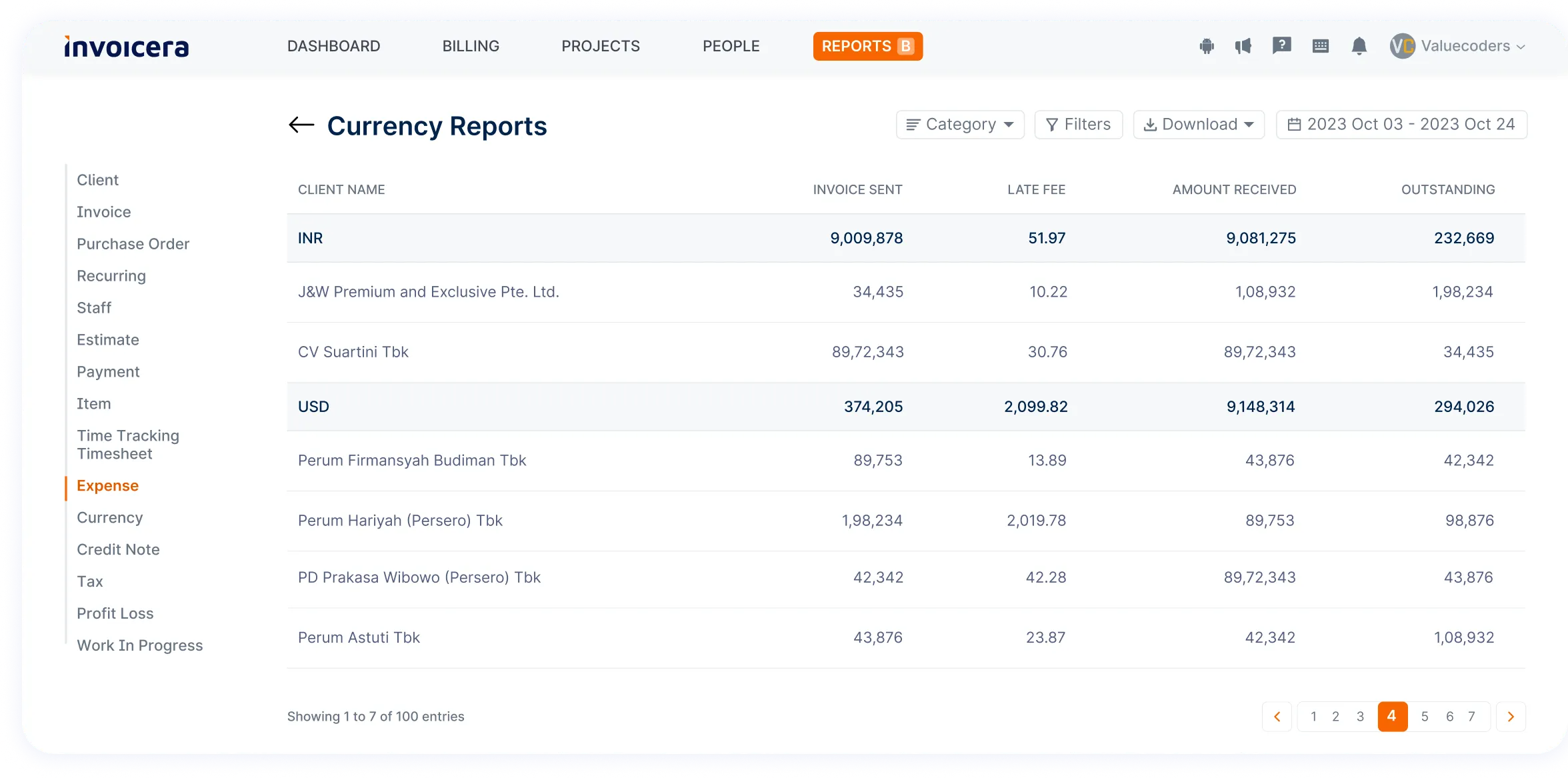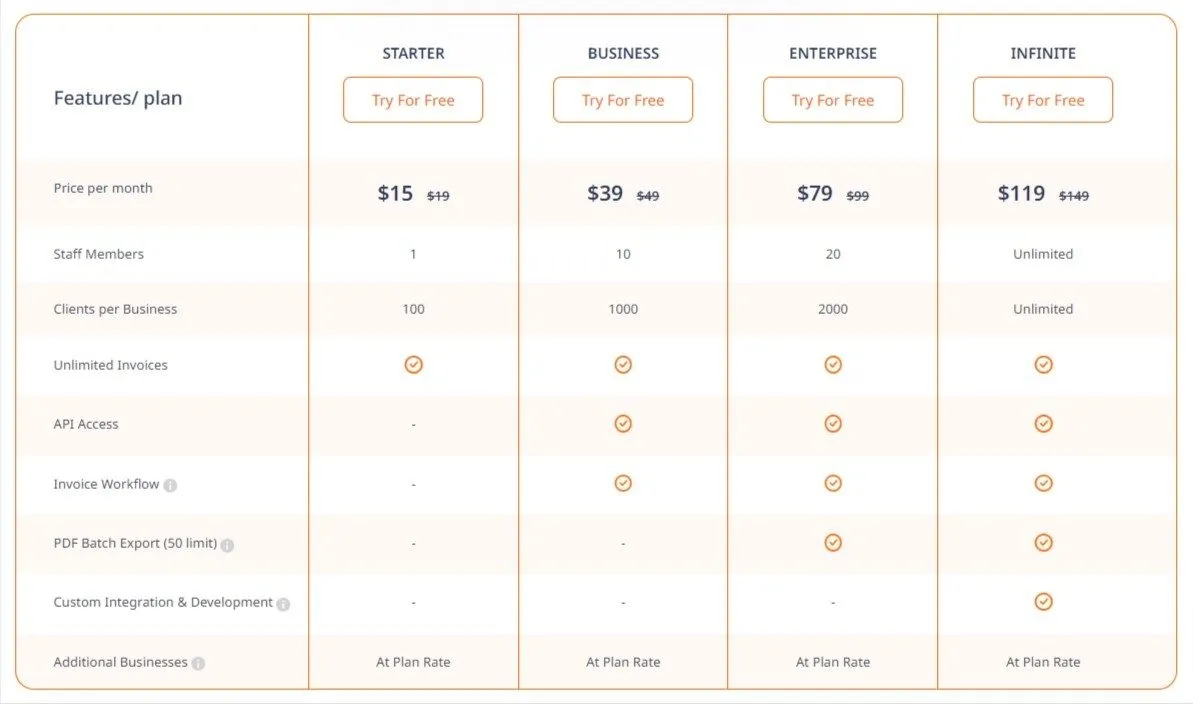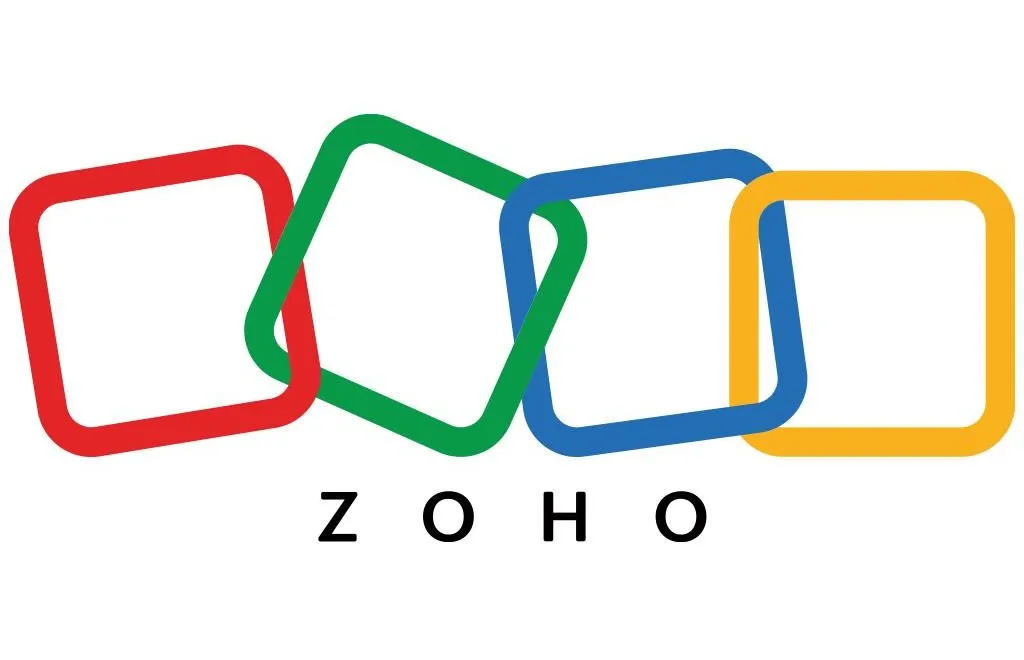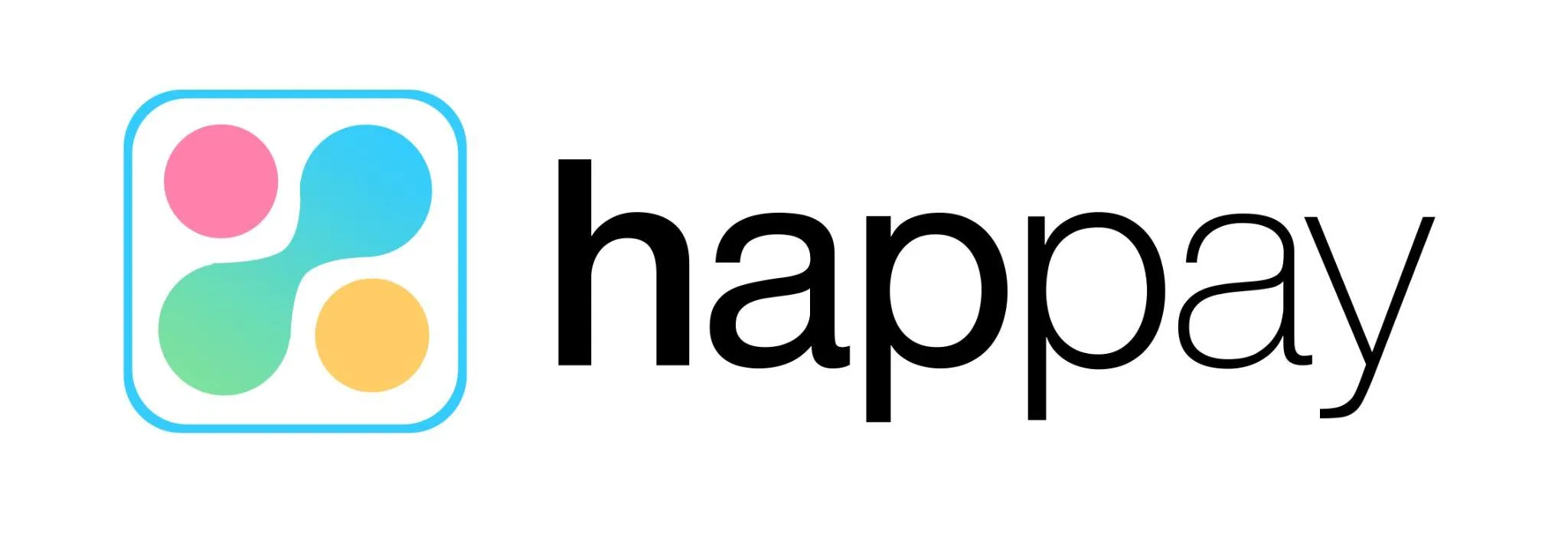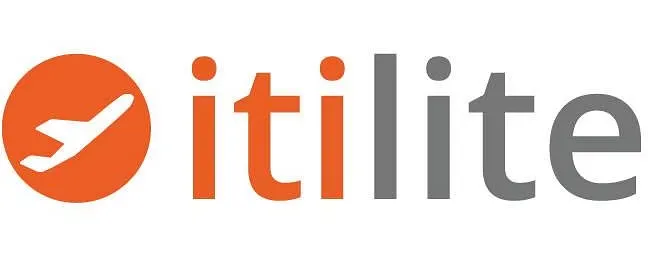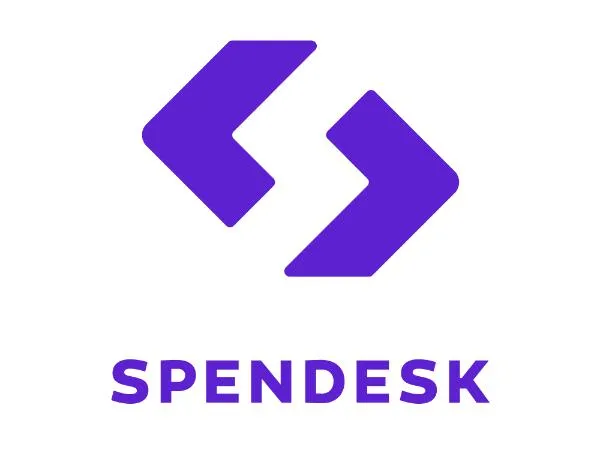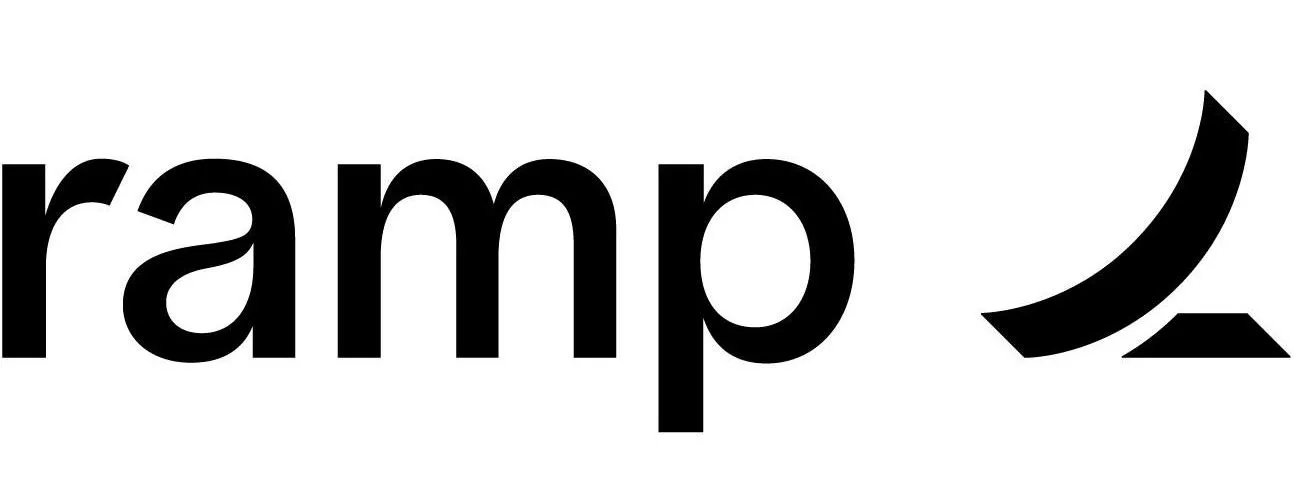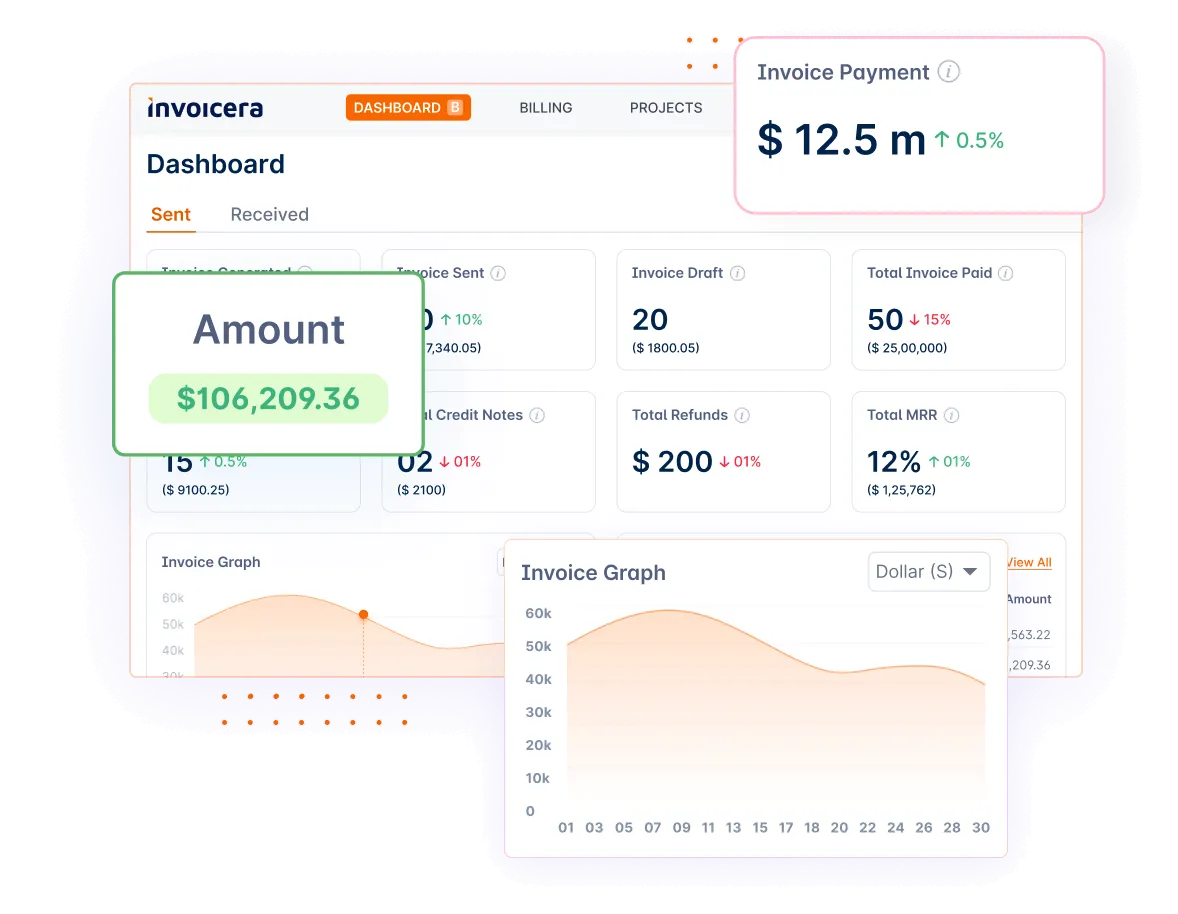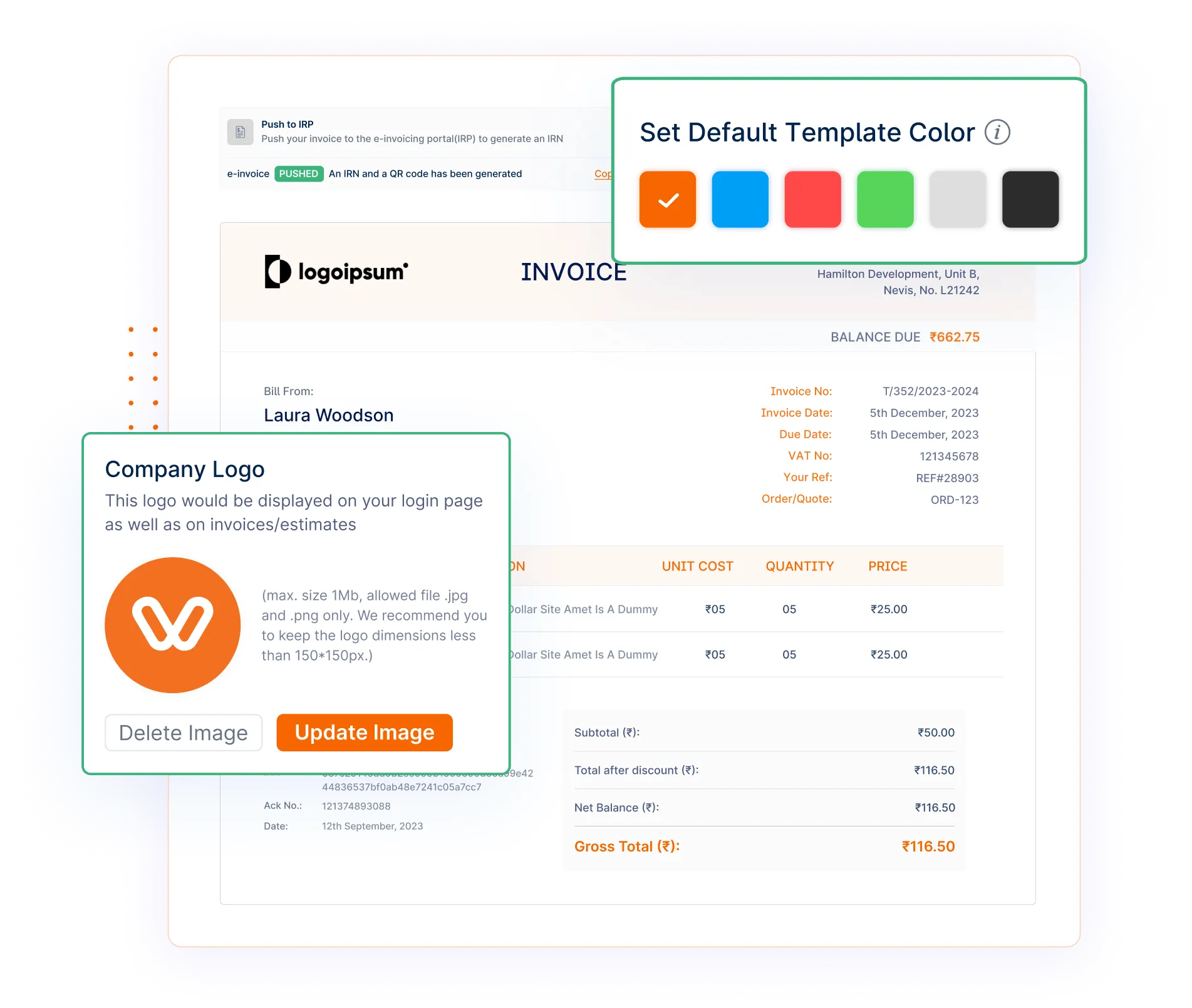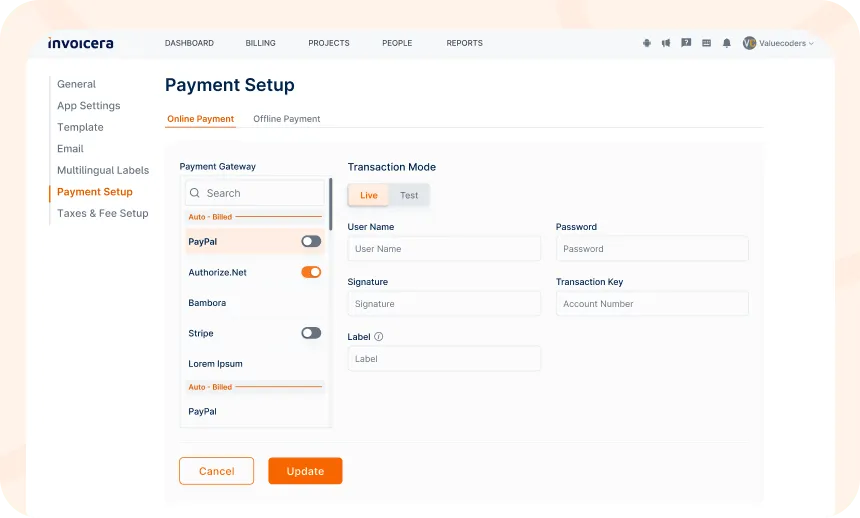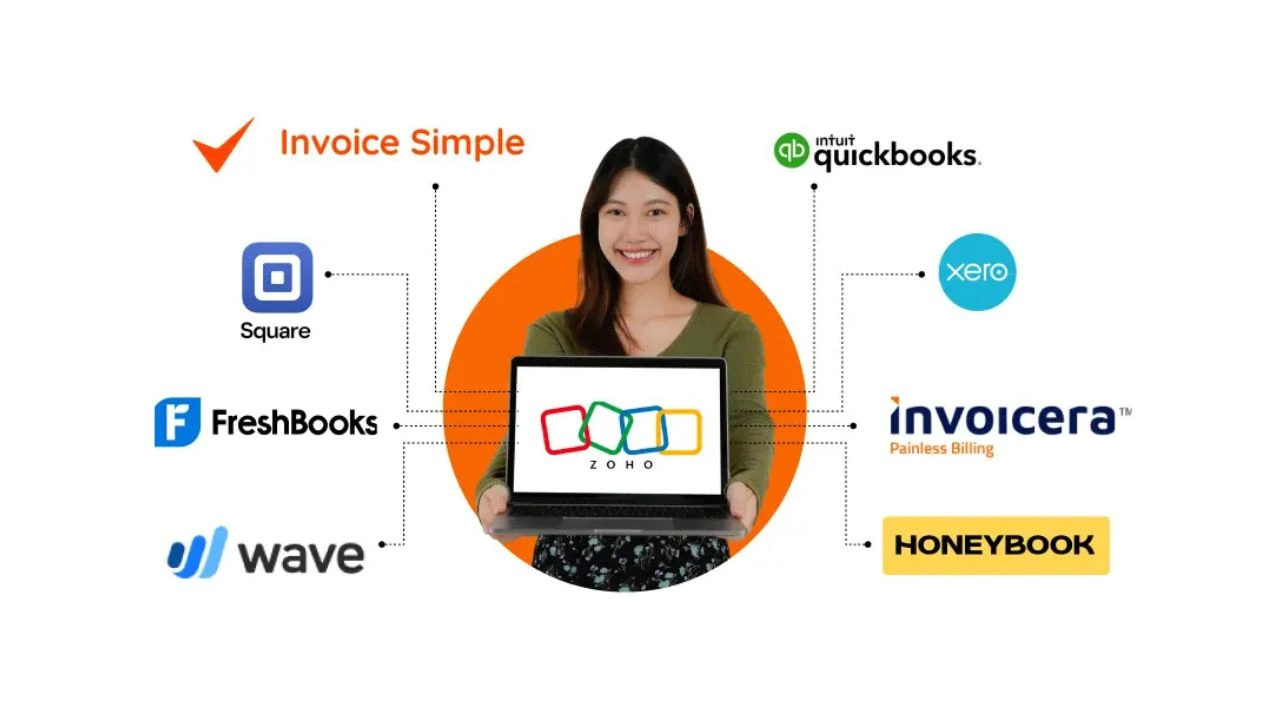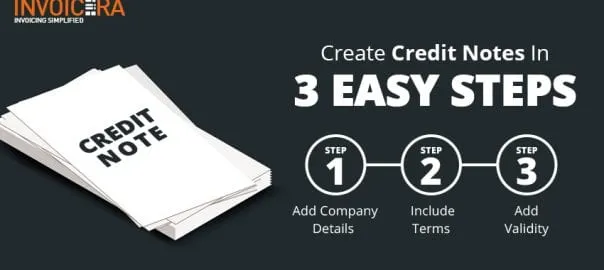Introduction
Handling finances can be tricky in today’s fast-paced business world. Keeping track manually takes time and can lead to mistakes, causing financial hiccups.
Luckily, there are handy tools using technology that promise to make financial management easier and more accurate.
Aberdeen Group says, “Automating financial management can save around 21% in yearly travel and expense costs.”
Think of these tools as virtual helpers dedicated to organizing and monitoring expenses. They’re not just solutions but like the brains behind well-organized finances.
Let’s explore the top 10 financial management tools in 2024 and beyond.
We’ll discuss what they can do and how they can make it easier for businesses to control spending, leading to increased finances.
So, let’s begin!
What Is Financial Management?
Financial management is essential for every business, involving carefully monitoring, controlling, and optimizing expenditures.
This includes travel expenses, office supplies, and significant investments like resources. Successful financial management goes beyond cost-cutting; it’s about making thoughtful spending decisions to foster growth and resilience.
Employing tools and software simplifies and enhances expense tracking, playing a pivotal role in managing business expenditures.
Why Are Financial Management Tools Important?
Financial management software is now a must-have for businesses, big and small. They bring a bunch of perks: making the process smoother, saving time and cash, and boosting financial oversight. Here’s why they’re essential:
Efficiency and Accuracy: Financial management tools automate many aspects of the process, reducing the need for manual data entry and the risk of human errors. This saves time and ensures that expense reports are more accurate. For businesses looking to further enhance these tools, financial software development services can provide customized solutions that tailor automation to specific needs, improving both the efficiency and accuracy of financial operations.
Real-time Visibility: These tools provide real-time visibility into company spending. You can track expenses as they occur, spotting any overspending and taking prompt corrective actions easier.
Policy Enforcement: Many financial management tools allow you to set and enforce spending policies. This ensures employees follow company spending guidelines, reducing the likelihood of unauthorized or excessive spending.
Cost Savings: These tools can significantly reduce costs by identifying areas where money can be saved. They help in optimizing expenses and eliminating unnecessary or redundant costs.
Streamlined Approval Process: With approval workflows, you can expedite the approval of financial reports. This ensures that employees are reimbursed promptly and minimizes administrative bottlenecks.
Compliance and Reporting: Financial management tools often have built-in compliance features that help businesses adhere to tax regulations and other financial reporting requirements.
Improved Employee Satisfaction: Employees benefit, too, as these tools simplify submitting and tracking expenses. It can lead to better job satisfaction and better morale.
Top 10 Financial Management Tools
1. Invoicera
Invoicera is a versatile expense management tool offering comprehensive features to simplify financial processes.
From expense tracking and reporting to invoice generation, this tool provides businesses with a one-stop solution for managing expenses efficiently.
Features
1. Expense Tracking
Invoicera streamlines expense tracking by allowing users to record, categorize, and monitor expenses effortlessly in real-time.
Its user-friendly interface simplifies the process of:
- Logging expenses
- Attaching receipts
- Allocating costs to specific projects or clients
2. Customizable Expense Reports
This tool enables the creation of detailed expense reports tailored to your business needs. Users can generate comprehensive reports showcasing expenditure patterns, categories, and trends.
These reports provide invaluable insights for informed decision-making and budget planning.
3. Automated Expense Management
Invoicera automates repetitive expense-related tasks, such as recurring expenses or approvals, reducing manual effort and ensuring accuracy.
Automation optimizes workflows, minimizing errors in expense reporting and reimbursement processes.
4. Multi-Currency Support For Expenses
With its multi-currency functionality, Invoicera simplifies international expense management.
Users can effortlessly handle expenses in different currencies and accurately convert and record expenditures, making it an ideal choice for businesses operating globally.
5. Expense Collaboration And Workflow Management
Invoicera supports collaboration among team members, allowing seamless communication and coordination in expense-related tasks.
It facilitates workflow management by assigning roles, responsibilities, and approvals within the expense management process.
Pros
- User-Friendly Interface: Its intuitive design makes it easy for beginners and seasoned users alike.
- Comprehensive Reporting: Gain deep insights into your finances through detailed reports.
- Automation Capabilities: Automate recurring invoices and payments, saving time and reducing errors.
Cons
- Rich Feature Set May Require Learning Curve: While Invoicera offers a robust set of features, users may find that exploring the full range of capabilities might require some initial time investment.
Pricing
Invoicera offers a tiered pricing model starting at $19/month for basic features and scaling up based on the needs of growing businesses.
The higher tiers provide access to advanced functionalities such as unlimited clients, custom workflows, and additional team members.
2. Zoho
Zoho Expense is part of the broader Zoho suite of business software, and it’s designed to streamline expense management for organizations.
With its user-friendly interface and integration capabilities, Zoho Expense simplifies expense reporting and approval processes.
Features
- Simplifies business travel and automates expense reports
- AI-powered fraud detection for added security
- Automates employee expenses effortlessly
- Syncs credit cards seamlessly with the expense software
- Smooth integration with Zoho’s CRM
- Speedy approval processes
Pros
- Enforces policies, customizes reimbursements, and automates workflows
- Automatically scans receipts and organizes expenses
- Competitive pricing and AI-driven fraud detection for audits
- 24/5 support, free onboarding, and an intuitive interactive dashboard
Cons
- Compact Expense Reporting
- Lengthy Onboarding
- Slow Customer Support
- Steep Learning Curve
- Disconnected Features & Unfriendly UI
Pricing
Get a monthly subscription with a free trial. The monthly plans are below:
- Standard financial management at ₹1300 per month
- Professional financial management at ₹2100 per month
- Enterprise financial management at ₹3000 per month
- Ultimate financial management at ₹3200 per month
Note: Get 34% discount on yearly plans
3. Expensify
Expensify stands out as a handy tool for automating expense and travel management. Its user-friendly app, available on Android and Mac, lets you snap pictures of receipts and handwritten bills from your phone.
With just a click, you can compile and submit expense reports, making things super easy for both employees and the environment.
It offers different plans suitable for businesses of all sizes, though it shines brightest for larger companies needing tailored solutions.
Features
- SmartScan simplifies receipt tracking and expense management within a single app.
- It integrates seamlessly with ERPs for easy use.
- Provides precise foreign exchange rates for accurate expense tracking.
- Detects and prevents duplicate expenses, ensuring accuracy and compliance.
Pros
- Easy-to-navigate interface
- Automatic expense categorization
- Reimbursements are sent in direct deposits to the bank account
- Mobile app for on-the-go expense management
Cons
- Pricing can be expensive for larger organizations
- Some users find it challenging to use
- Customer service is not satisfactory
Pricing
- Free trial plan Under the free trial, users can use the Expensify Card, Reimburse travel expenses, Pay bills, and send invoices.
- Collect plan Starts at $5 per month
- Control plan Starts at $9 a month
4. Happay
Happay brings together travel, expenses, and payments all in one place. It’s a complete system that helps businesses by bringing everything together smoothly.
Features
Manage All Business Expenses Easily: Happay handles business expenses easily. It works great on your phone or computer, so you can access it wherever you are.
Smooth Expense Management: This software specifically handles all the expenses for your company. It even helps with GST by capturing and organizing that info for you.
Expert Help and Setup: Happay’s support team helps set it up and supports you whenever you need it.
Stay Compliant and Get Insights: Its built-in features help you follow all the rules and regulations. Plus, you’ll get helpful analytics to understand your spending better.
Smart Reports and Filing: It uses smart technology to help create reports and handle filing for expenses automatically.
Top-Level Security: They use super-strong security measures. All your data is encrypted to keep it safe.
Pros
- Records expenses from credit card bills, emails, SMS, WhatsApp, Uber, etc
- Real-time views of expenses, policy violations, and budget utilisations
- Captures state-wise GST, saving time for finance teams
Cons
- It does not support Chinese and Japanese languages.
Pricing
Happay provides pricing options that match users’ individual needs and specifications. For further information, reach out to Happay’s team.
5. ITLITE
ITLITE is a cloud-based expense management tool that offers various features, including expense tracking, policy enforcement, and analytics.
It caters to businesses looking for a comprehensive solution to control their expenses efficiently.
Features
- Integration with credit cards for seamless transactions
- Automated reminders for timely expense management
- Capability to handle multiple currencies effortlessly
- Mobile app accessibility for on-the-go management
- Intuitive dashboard for easy navigation and overview
- Streamlined approval process workflow for efficient management
Pros
- Reduces complexity in travel operations
- Convenient for travel business to manage expenses
Cons
- Unable to book expenses in an Excel format
Pricing
ITILITE offers plans at:
- $4.99/month (Billed annually)
- $ 7.99/month (Billed monthly)
6. SAP Concur
SAP Concur is a globally recognized expense management solution that caters to organizations of all sizes.
With its powerful expense tracking, policy enforcement, and analytics, it simplifies expense management while ensuring compliance with corporate policies and tax regulations.
Features
- Financial data integration for spending control
- Automated business, travel, and AP processes
- Leading in travel, expense, and invoice management
Pros
- Integration with travel and invoice management
- Robust reporting capabilities
- Policy enforcement and approval workflows
- Raise tickets and get an immediate resolution
Cons
- The interface is overwhelming for some users
- File attachment difficulties
- Higher pricing than alternatives
- Complex setup and configuration
Pricing
- Free Trials: Experience SAP Concur for a limited time
- Automate: $9/report for dashboard, card integration, and faster reimbursement
- Insights & Optimization: Price varies based on features and customization
7. Spendesk
Spendesk is a spend management platform that combines company cards, expense reimbursements, and invoice processing in one comprehensive tool.
It’s designed to give businesses complete control over their spending and expenses.
Features
- Unlimited virtual cards, users, and subscriptions
- Free setup with no hidden fees
- 7-in-1 platform: cards, invoices, expenses, budgets, approvals, automation, reporting
- Scalable tools for spend management
Pros
- Streamlined finance workflow
- Accurate revenue reports
- Secure virtual cards
- Customizable approval flows
- Integration with popular accounting systems
- Automated receipt collection and reconciliation
- Four times faster monthly book processing
Cons
- Inconsistent policy workflows
- Limited acceptance of card
- Errors in auto-scan filling
Pricing
Spendesk offers four plans: Free, Essentials, Scale, and Premium. You can get a quotation by contacting their sales team.
8. Fyle
Fyle is an innovative expense management tool focusing on automation and seamless integration with various accounting systems.
It offers automated expense tracking, intelligent policy checks, and real-time reporting.
Features
- Real-time credit card feeds and prompt ACH reimbursements
- Live report updates and approval/rejection options
- Automated policy checks and robust compliance
- Advanced analytics benefit finance teams
- Secure login and mobile app for on-the-go access
Pros
- Integrates smoothly with Slack, Gmail, Outlook, and more apps
- Matches receipt images with respective credit card transactions
- Fyle seamlessly integrates with all credit cards
- 24/7 customer support is available via chat and email
Cons
- Users cannot edit a report before approval has been given
- It is found that there are incorrect transactions with receipts forwarded by email
Pricing
- Standard: $6.99 per user per month
- Business: $11.99 for one active user per month
- Enterprise: This is a customizable plan according to business requirements. You can contact their sales team to get this plan.
9. Webexpenses
Webexpenses is a cloud-based expense management tool that makes expense reporting and approval workflows simple and efficient.
It allows businesses to capture, submit, and approve expenses on the go, improving overall productivity.
Features
- On-the-go expense recording, tracking, and management
- Built-in travel expense policies for compliance
- Intelligent tech matches receipts to credit cards
- User-friendly petty cash management system
- Carbon tracking monitors travel carbon footprint
Pros
- Simple workflow and compliance management platform
- Diverse receipt capture for organized reports
- Quick employee reimbursements to banks or payroll
- Seamless compatibility with finance, HRMS, and CRM systems
Cons
- Repetitive input for key details needs default options
- Difficulty in saving frequently visited addresses in the app
Pricing
- Starts at $7 per active user per month, with varying costs based on solution complexity
10. Ramp
Ramp is an expense management tool that offers corporate cards with real-time spending tracking and control.
With its smart features, Ramp helps businesses optimize their expenses while gaining insights into spending patterns.
Features
- Cashback rewards and incentives are offered
- User-friendly cards with spending limits and approval flow
- Average savings of 3.5% available
- AI-powered Finance feature for savings and insights
Pros
- User-friendly interface for easy navigation
- Global corporate card and expense management
- Real-time spending insights and receipt matching
- Expense optimization and vendor negotiation
- Ramp users close books 8x faster
Cons
- Integration challenges reported by some users
- Lack of customer support, only email ticket resolution
- Inability to halt multiple notifications for recurring payments
Pricing
- Ramp Free: Basic features
- Ramp Plus: Advanced features
- Ramp Enterprise: Highly advanced features
11. Fuelfinance
Fuelfinance offers a comprehensive suite of financial management solutions, combining AI’s power with financial professionals’ expertise to streamline your business’s financial processes.
Fuelfinance provides an integrated platform that enables businesses to manage their finances efficiently and effectively. From generating clean and precise spreadsheets to producing insightful graphs, Fuelfinance aims to save you time on organizing data so you can focus on making informed decisions for your business.
Features
- Financial Statements: Easily generate Profit and Loss, Cash Flow, and Balance Sheet statements.
- Dashboards: Access customizable dashboards tailored to your business’s specific needs and KPIs.
- Monthly Updates: Stay up-to-date with monthly updates to your financial reports and forecasts.
- Unit Economics: Gain insights into your customer acquisition cost (CAC) and lifetime value (LTV) to optimize sales and marketing strategies.
- Financial Planning: Utilize historical data and future plans to create accurate financial projections and plans.
- Plan/Actual Analysis: Conduct high-precision forecasting through regular plan/actual analysis.
- Integrations: Seamlessly integrate with existing reports, departments and third-party services through a suite of connectors.
- Security and Data: Rest assured that your data will be securely stored in Fuel’s cloud infrastructure.
Pros
- Streamlined financial management processes
- AI-powered insights and analysis
- Customizable dashboards and reports
- Regular updates and support from dedicated managers
Cons
- Potential learning curve for new users
- Requires commitment to regular data input and analysis
Pricing
Choose your subscription:
Monthly
- Essential: $1,399/mo
- Growth: $2,699/mo
Quarterly
- Essential: $1,199/mo
- Growth: $2,399/mo
Why Is Invoicera The Best Financial Management Tool?
Invoicera stands out as the go-to expense management tool for a range of compelling reasons:
- Comprehensive Features: Invoicera combines expense management, time tracking, invoicing, and billing in one platform, streamlining financial processes for businesses of all sizes.
- User-Friendly Interface: Its intuitive design ensures easy navigation for beginners and experienced professionals, making expense management effortless.
- Customization Options: Invoicera allows extensive customization of invoices, reports, and expense categories, adapting seamlessly to diverse business needs.
- Robust Security Measures: Prioritizing security, Invoicera employs advanced encryption, stringent access controls, and regular security audits to safeguard user data.
- Integration Capabilities: Seamless integration with accounting software, CRM systems, and payment gateways enhances functionality and compatibility with existing tools.
- Exceptional Support: Invoicera offers excellent customer support, providing timely assistance and resources to resolve queries or technical issues promptly.
Bonus Tips For Effective Financial Management
Efficient expense tracking and cost control are pivotal for financial stability. Here are some best practices:
- Establish Clear Policies: Define expense policies to guide employees, ensuring clarity on what expenses are reimbursable.
- Regular Monitoring: Track expenses consistently to identify trends, anomalies, and areas for cost-saving.
- Leverage Technology: Utilize expense management tools to automate processes, reducing errors and saving time.
- Employee Training: Educate staff on expense policies and proper procedures to encourage compliance and accountability.
- Encourage Smart Spending: Encourage employees to make cost-effective choices without compromising productivity.
Future Trends In Financial Management
Exciting advancements await the future of expense management:
- Integration of AI and Machine Learning: Predictive analytics and insights driven by AI will enhance expense forecasting and decision-making.
- Emphasis on Mobile Solutions: Expect more tools to prioritize mobile accessibility, facilitating on-the-go expense tracking and approvals.
- Blockchain for Transparency: The use of blockchain technology could revolutionize expense tracking, ensuring secure and transparent records.
- Integrated Ecosystems: Tools that seamlessly integrate expense management with broader financial systems will streamline operations.
- Sustainability Tracking: Emerging trends may focus on monitoring eco-friendly expenses, aligning with corporate sustainability goals.
Stay ahead in expense management by watching these trends in the upcoming years!
Key Takeaways
- Financial management is crucial for businesses, and manual tracking can lead to errors and disruptions.
- Technology-driven tools offer enhanced accuracy and efficiency.
- The top 10 financial management tools, including Invoicera, Zoho, and Expensify, offer versatile solutions with features such as automation, customization, and robust security measures.
- These tools, recognized by the Aberdeen Group, can save around 21% in yearly travel and expense costs.
- Financial management software provides real-time expense visibility, reduces manual errors, and improves the employee experience.
- Selecting the right tool involves considering factors like ease of use, integration, mobile access, security, and scalability.
FAQs
How often should financial audits be conducted?
Financial audits should be performed annually as a standard practice. However, specific industries or regulatory requirements might demand more frequent audits.
Are expense management tools secure for storing sensitive financial data?
Reputable expense management tools employ robust security measures like encryption, secure servers, and compliance with data protection laws to safeguard sensitive information.
How can businesses encourage employees to adhere to expense policies?
Clear communication and regular training on expense policies are crucial. Incentivize compliance through rewards or recognition for employees who consistently follow guidelines.

